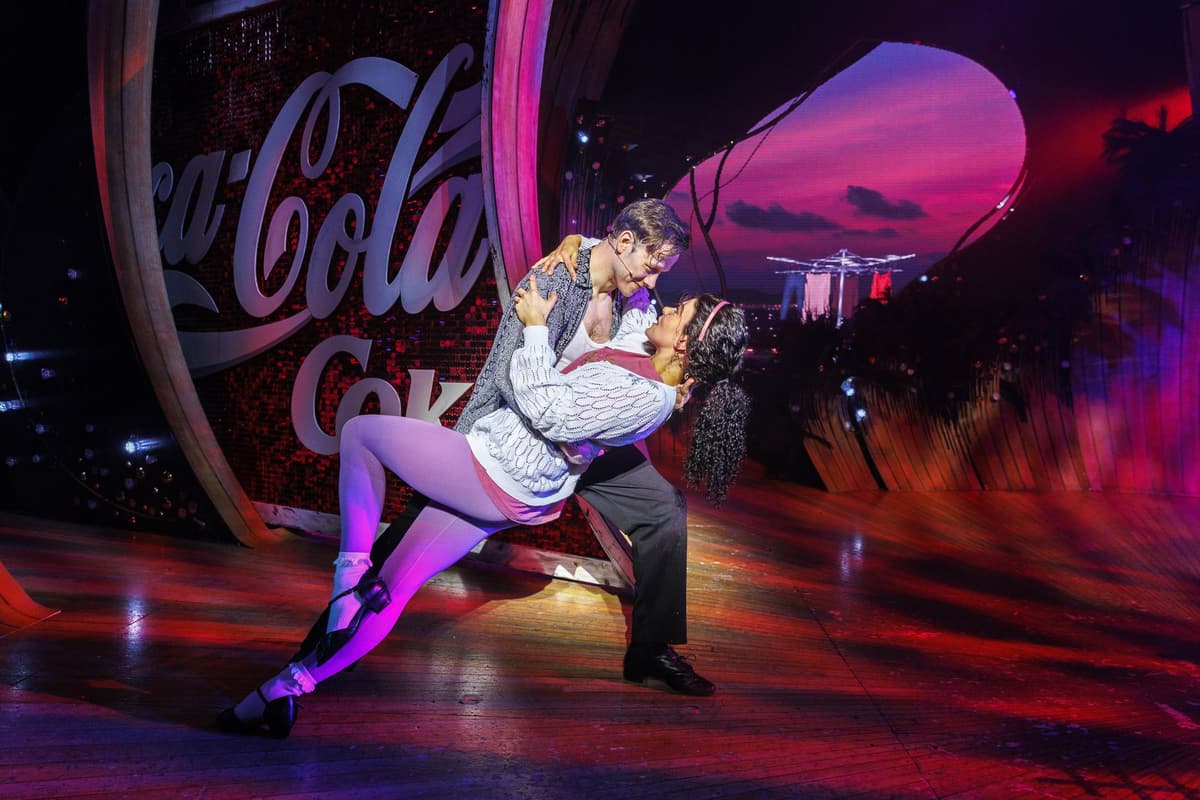Chaillot – Théâtre national de la Danse: Corps Extrêmes – Sadler’s Wells, London

Choreographer: Rachid Ouramande
The hour of performance from Chaillot, France’s national theatre of dance, starts with a filmed sequence in which Nathan Paulin demonstrates his abilities on the highline – a modern version of the tightrope – between two cliffs that plummet to a forest far, far below.
Paulin doesn’t just walk across it. He will sit cross-legged and contemplate his place in the universe, a mini camera placed on the highline itself and looking all the way down it, reducing the single rope down to a blurry dot, the performer sitting on nothing. At other times, drone photography shoots him side-on as he performs lunges that cause the whole highline to fluctuate, causing him to undulate out of both the top and bottom of the frame.
For anybody who’s the least bit squeamish about heights, the vertiginous display is quite dizzying, but that sensation is steadied by the calm, meditative quality of Paulin’s voiceover. That sense of inner peace continues into the space as the film ends and Paulin emerges onto another, less precarious highline.
He is accompanied by a troupe of nine other performers, who emerge atop the climbing wall that had been acting as the film’s screen. It is peppered with handholds and ledges, across which the company are able to clamber with poetic ease.
And while the floor space eventually becomes their canvas, the sense of height is always reflected. Dancers stand on the shoulders of other dancers, themselves standing on a third performer. Dancers step effortlessly between the wall and each other, using each other’s limbs as a form of human highline. In one case, a performer somersaults from a high ledge into a handstand on others’ outstretched hands. The combination of precision acrobatics and interpretive dance reflects the combination of danger and calmness expressed in Paulin’s original film.
All too often, both modern dance works and circus acrobatics involve a certain amount of setup for the performers to get in position. This can result in a sense of staccato movement between set pieces. There is none of that here, with every motion leading into the next with a fluid legato that can often feel as if gravity is an optional component of the company’s movements.
Corps extrêmes also contains other pre-recorded testimonies that, like Paulin’s, influence the performance. One dancer talks about the fear that she is getting too old, and how that once manifested in her landing badly on one of her fellow dancers. Another talks of her passion for free climbing – and with another film projected onto the climbing wall, is able to turn the scramble across sheer rock faces into a contemplative duet with herself.
Jean-Baptiste Julien’s musical score starts with a lone guitar, its solitary melody a reflection of life on that cliff-face highline away from other people. It speeds up and expands as the company performs, but always returns to a sense of stillness. As does the piece: for all the fluidity, precision and movement of the ten-strong company, it is that core quality of strength in isolation, of finding the meditative moments.
Rachid Ouramdane’s choreography illustrates the extreme heights to which some people will push themselves. But like the testimonies of those featured, its real strength, and the much scarier prospect, is what it says about our inner selves. That same sense of determination that free climbers and highline walkers need is just as essential when our feet are on solid ground. That is a lesson that Corps extrêmes hides in plain sight: a demonstration that achieving anything starts with trust in ourselves.
Continues until 24 May 2023







/cloudfront-us-east-1.images.arcpublishing.com/gray/4AWJ5PUUSFOMNA3L3C6627VWDQ.png)





